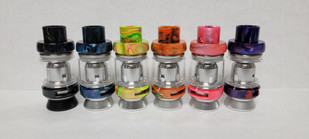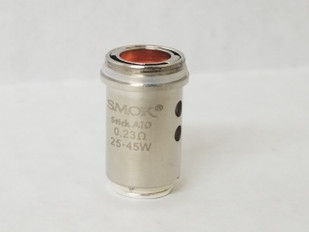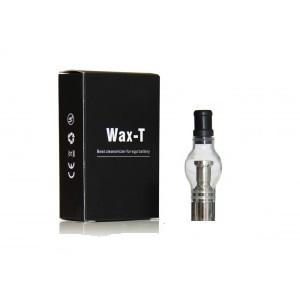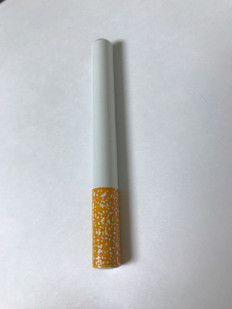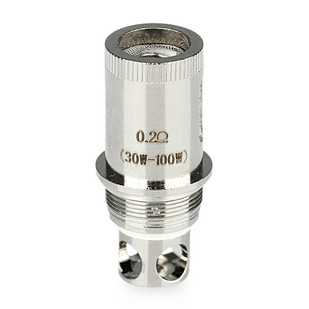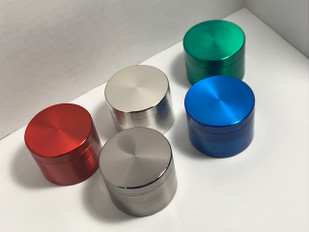- Home
- The Vape Mall Blog
- Kanthal Wire vs. Stainless Steel Wire vs. Nickel Wire vs. Titanium Wire for Coil Builds
Kanthal Wire vs. Stainless Steel Wire vs. Nickel Wire vs. Titanium Wire for Coil Builds
Posted by on
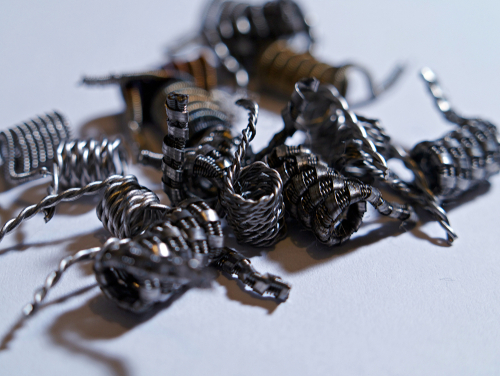 Getting
into DIY vaping is quite an investment of time and effort, but the results are
undeniably worth it. Building your own
coils gives you total freedom when it comes to how you experience your vapes,
and for tech nerds like us in particular, it can be deeply gratifying as a fun
expression of creativity.
Getting
into DIY vaping is quite an investment of time and effort, but the results are
undeniably worth it. Building your own
coils gives you total freedom when it comes to how you experience your vapes,
and for tech nerds like us in particular, it can be deeply gratifying as a fun
expression of creativity.
owever, there’s a bit of learning curve, since coil-building is not an intuitive endeavor. It requires a good understanding of how different coil builds react with different temperatures, and some basic understanding of engineering to ensure maximum satisfaction, not to mention safety..
The Basics on Building Vape Coils
Basically, building your own vape coils is a hobby many people engage in so that they can experience more precise control over the outcome of their vapes. Certain types of coils are ideal at certain temperatures or other vaping output modes settings, and by building your own, you’re no longer restricted by what’s available from a certain brand or retailer.
In terms of the type of metal wire, it’s important to know that each one is compatible with specific settings of your vaping device, which means that they cannot all be used interchangeably with one another. Different types of wire materials have different ramp-up times (how quickly they absorb heat to vaporize your e-juice), different gauges, and different resistance levels.
Most people who build their own coils are vaping in temperature control – that is, adjusting the output of the device according to temperature rather than wattage. They require specific types of wire based on their TCR (temperature coefficient of resistance), and the TCR of any given wire material is based on how much its resistance increases as the temperature the mod is set at goes up. Mods recognize the resistance of these standard wire materials so that they can recognize when the coil rises to a specific temp, and at this point, the current is reduced so that the coil never exceeds that temperature, which prevents it from burning.
Kanthal Wires
First, let’s talk about kanthal wires, which are made from iron, chromium, and aluminum. They’re great for vaping in wattage mode and are a beginner-friendly option because of their versatility when it comes to different wattages. They’re also malleable enough, while still retaining their coil shape. They’re great for single-wire coil builds in particular, and better yet, they’re inexpensive. But, kanthal wire is not compatible with temperature control (TC) mode, so if you’re looking to get into that style of vaping, this material is, sadly, a no go.
Stainless Steel Wires
Next up, we have stainless steel, which is the only wire material that is compatible with both wattage mode and TC mode, making it uniquely versatile. Stainless steel is an alloy of chromium, nickel, carbon, copper, and manganese, with nickel contents ranging from 10-14%. We point that out because some individuals do have an allergy to nickel, with varying degrees of sensitivity.
Stainless steel wire comes in various grades, and SS316L is considered the standard choice, while SS317L is also popular. As far as coil building is concerned, it’s great for forming into a coil, and holds its shape wonderfully. The ramp-up time is faster than kanthal, but we don’t recommend it for pulse mode, as it can leech chemicals into your vapor that don’t taste pleasant. It’s also a wire you don’t want to dry burn for that reason.
Nickel Wires
Nickel wire, aka ni200, is pure nickel, so again, anyone with an allergy to nickel should take note. Although a common choice for temperature control vaping, it’s not compatible with wattage mode at all. Nickel is nice and soft, so it’s malleable, but that can actually be a big drawback since it struggles to hold its shape. So, forming it into a perfect coil can even be a challenge. A positive is that it’s a very inexpensive as well.
Titanium
Finally, we have titanium, which is also only compatible with TC vaping, so don’t try to use it when vaping in wattage mode. Titanium is also the most controversial wire as it’s the most prone to igniting, presenting a potential safety hazard – although it’s very rare for this to happen, as vapers rarely reach the temperatures that would cause any kind of ignition risk. Dry-burning titanium wire is, however, dangerous, for those reasons. And, it must be pointed out that fewer companies are carrying it these days because of potential hazards.
But, titanium wire is super easy to form into coils, and does hold its shape beautifully. So, if you’re able to score some, you will be rewarded.
Which Vape Coil Material Should I Choose?
As you can see, all types of metal have their clear pros and cons, not to mention compatibilities with different vaping modes. So, we encourage you to explore the different options for yourself and get to experimenting. By and large, stainless steel is a failproof option if you ask most vapers, thanks to its versatility, safety, and versatility when it comes to the coils that you can build with it. However, it’s clear that every vaper has their personal preference, and you’ll decide which metal you prefer only through trial and error.
 Loading... Please wait...
Loading... Please wait...



